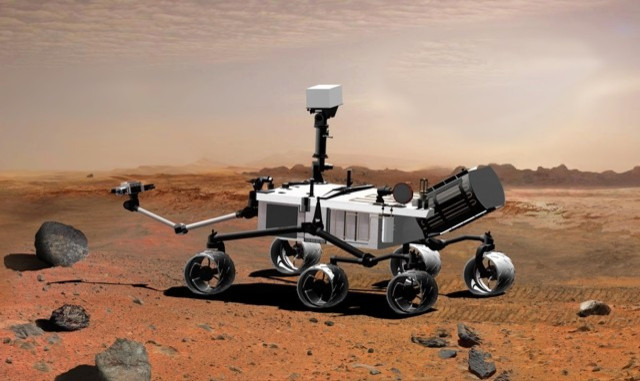NASA Invents New Technique For Finding Alien Life

Researchers from NASA's Jet Propulsion Laboratory in Pasadena, Calif., have come up with an idea to improve on an old standby of space exploration instruments and improve the odds of finding life, if any, on Mars.
By adding a laser and an ion funnel to a mass spectrometer, it is possible to analyze the elements from the Martian surface directly, without the complex handling samples usually need.
The mass spectrometer is used to identify molecules, their elements and their isotopes in samples ranging from rocks to proteins. It does so by looking at their mass-to-charge ratios. Ordinarily a sample has to be prepared because it will be vaporized and then ionized so the electrons and atomic nuclei can be separated.
The new version uses a two-step technique. First it shoots a laser at the sample's surface. This creates a plume of molecules and ions. To get the ions into the mass spectrometer, the new system uses an ion funnel. The ion funnel uses conductive, progressively smaller electrodes in the shape of a ring that attract the ions, effectively vacuuming them into the mass spectrometer.
There are a lot of exciting discoveries about Mars that have yet to be made. This technique could make understanding the composition of rocks and soils on Mars -- possibly including evidence of life -- much easier, said Paul Johnson, the paper's lead author, in a statement.
Johnson got the idea after reading about the ion funnel technology for mass spectrometry developed by Keqi Tang and Dick Smith of the Department of Energy's Pacific Northwest National Laboratory. The two said the ion funnel wasn't originally intended for space, but they are glad to see it's a good fit with the Mars mass spectrometer. Johnson also got contributions from William Brinckerhoff and Robert Hodyss of NASA on the project.
NASA says mass spectrometry has been used to analyze Martian soil dating back to the Viking explorations of the 1970s. Back then, soil was scooped up, placed into a chamber and heated to make the sample a gas before it could be analyzed -- leaving a much greater chance for failure. With the modern adjustments, it could be all done instantaneously.
Mass spectrometry will be used again when the Mars Science Laboratory lifts off for the planet later this year. The improved system from Johnson and his colleagues is less likely to be used as it needs further work to be ready for space.
Cutting rocks, picking them up and moving them around, all this adds complexity, Johnson said. Complexity makes it more difficult to conduct experiments with a robotic rover. Plus, adding new tools so the instrument can do these extra tasks increase size, weight and power consumption. All this makes sending a mass spectrometer into space even more challenging.
The project was funded by NASA and experiments were done at the Jet Propulsion Laboratory, which is managed by the California Institute of Technology.
To contact the reporter responsible for this story call (646) 461 6920 or email g.perna@ibtimes.com.
© Copyright IBTimes 2025. All rights reserved.





















